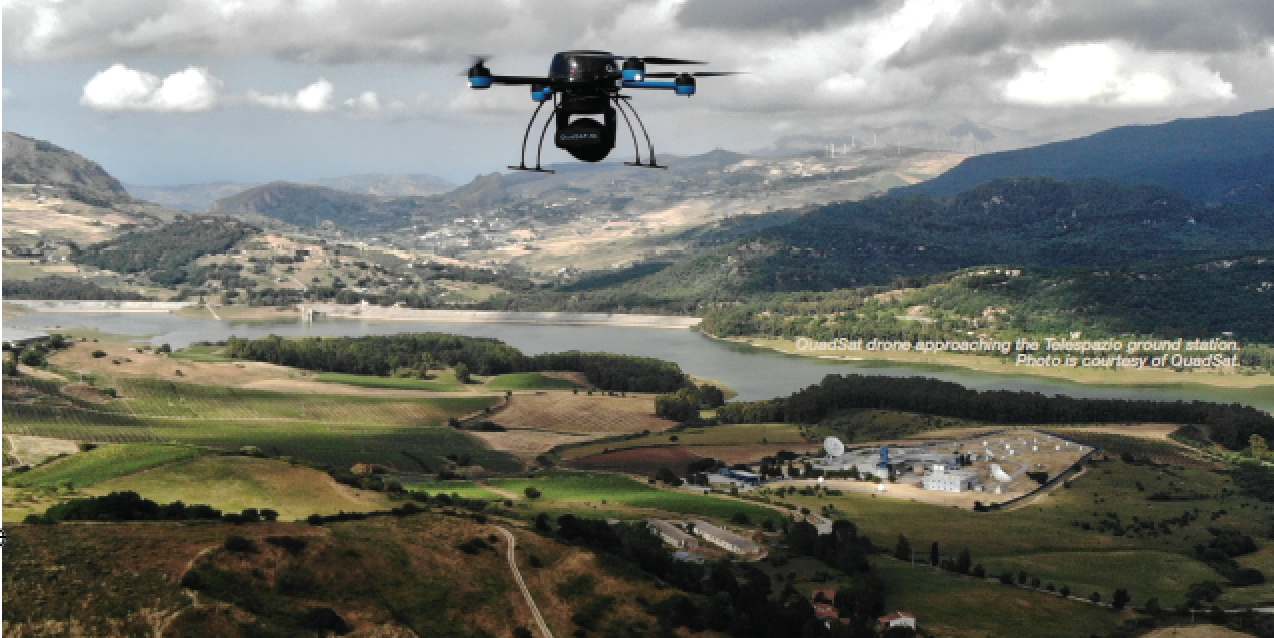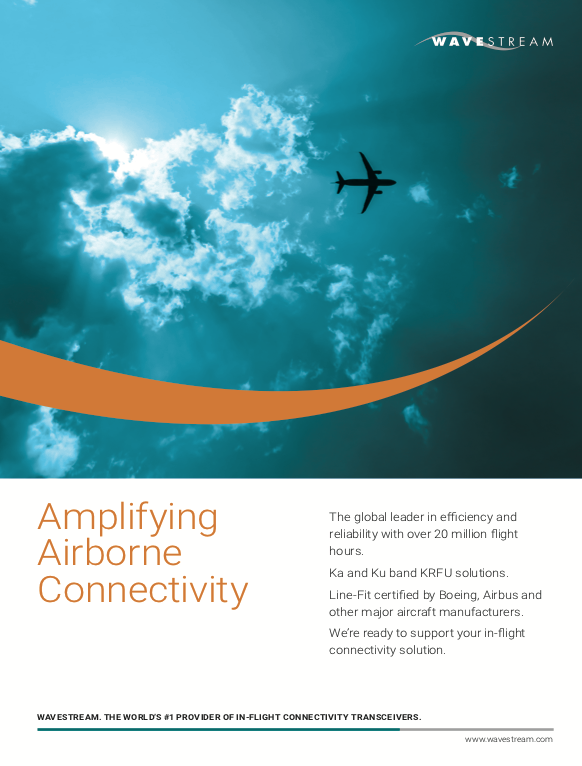Lower Earth Orbit (LEO) has become synonymous with large satellite constellations — there has been a huge focus on the significant increase in the number of satellites on-orbit, with many seeing this large shift in the use of space as a bright new opportunity for connectivity and other Earth- based services.

LEO will deliver accessibility to the low-cost and low-latency connectivity required by consumers, while offering a geographically, wide-reaching service. Numerous industries will benefit from its availability, sitting alongside the growing trend to use Internet of Things (IoT) to enhance efficiencies in business, as well as day-to-day convenience for consumers.
Dependency on a connected world is set to increase, as is the need to provide reliable and robust networks to customers.
Preparing The Ground Segment
As OneWeb prepares for global rollout of its LEO constellation, the company is also busy preparing the required ground infrastructure. With several teleports in place around the globe, OneWeb was looking for a way to effectively verify its ground antennas to ensure everything was working correctly ahead of launch and to minimize any potential errors caused by errors with the ground segment.
This was challenging for the following reasons:
1. OneWeb’s ground segment infrastructure spans the globe A significant aspect of the challenge at the ground segment is managing the magnitude of the infrastructure. With teleports situated globally, OneWeb was aware that resources can quickly be consumed coordinating testing and calibration on the entire network. OneWeb wanted to ensure it could maintain high-quality teleports, however logistical challenges using traditional methods could quickly become time consuming and financially costly.
2. LEO introduces new and unique challenges LEO satellites mean tracking and switching through multiple gateways at a scale that the industry is unfamiliar with.
OneWeb knew this meant it would be important to test and monitor accuracy and satellite acquisition quality during the ground segment handovers to safeguard the integrity of the system. The operator knew that this would be critical in ensuring that the satellites are handed over smoothly within a set window of action.
3. OneWeb needed to balance accuracy and resilience with cost-efficiency With reliability and stability clearly being a priority for OneWeb, it was fundamental to identify tools which offer cost efficiency at a large scale. A small problem can quickly be magnified when managing a large number of teleports. Maintaining accuracy at the antenna may sound somewhat obvious, however commonly used methods and systems introduce larger implications, such as long stints of downtime caused by logistical requirements, which can impede and restrict the testing and calibration regimes required to maintain high- quality connectivity within the up/downlinking process.

Aware that most existing testing methods are time-consuming and expensive, which could delay launches for OneWeb, the operator approached QuadSAT to see if its drone-based solution could be the answer.
QuadSAT’s drone-based system provides users with flexible and accurate antenna testing and calibration. The in-depth testing, performed by the drone mimicking a satellite, provides quality assurance and removes one of the most significant challenges within testing; testing can be performed on-site, in the antenna’s own environment.
Not only does this reduce downtime and the costs associated with testing logistics, but it also provides highly accurate feedback as its results incorporate environmental reflections and interactions. The system ensures repeatability, control over the drone during measurements, ease of operation and data delivery in a uniform format.
With the number of teleports within the OneWeb network, using drones had the potential to transform ground segment testing and ultimately improve the quality of services being provided.
Introducing Drones To The LEO Ground Segment
OneWeb and QuadSAT worked together to assess the use of drones within the LEO ground segment network. The testing of LEO ground segments requires a full raster view of the antenna and not just principal cuts as the entire performance of the dish will be used for tracking, and therefore needs observing.
Subtle changes at the pointing can have a large impact on RF signals. Additionally, the use of Ka-band offers greater throughput in smaller dishes; however, the need for test and measurement increases with greater directivity as it increases the likelihood of radio frequency interference (RFI), as well as the severity of its impact on services.
 QuadSat drone performing in-situ measurements at the Telespazio Scanzano teleport. Photo is courtesy of QuadSat
QuadSat drone performing in-situ measurements at the Telespazio Scanzano teleport. Photo is courtesy of QuadSat
The first location for the partnership was the Telespazio teleport in Scanzano (Palermo, Italy), to verify the method’s findings. A small team from QuadSAT travelled to the teleport to inspect the area, set up testing and perform in-situ measurements. QuadSAT measured the radiation patterns of several antennas, enabling the validation of feed alignment and the direction of pointing. Testing included the generation of antenna radiation patterns on both a known good antenna as well as those which had not yet been aligned.
The measurement of north offset in antenna pointing was completed through the verification of antenna pointing precision with respect to the Azimuth axis. It also demonstrated the time needed to test and verify each antenna from setup to completion, including any antenna realignments and equipment reconfiguration.
A week after the official testing had finished, OneWeb received the final reports, containing measured and raw data. The findings enabled OneWeb to verify its teleports and provided grounds for it to use drone-based, in-situ diagnostics in place of traditional antenna validation techniques, when required.
Following on from the success at Telespazio, QuadSAT worked to verify 10 antennas at the KSAT Svalbard Ground Station in Norway, the world´s largest and northernmost station ideally located at 78´ North, as part of OneWeb’s ground segment rollout. The tests focused on the measurements of antenna radiation diagrams, and the verification of the North offset in antenna pointing using the drone as the source.


QuadSAT executed several measurements, including azimuth, elevation and raster cuts to provide accurate data for processing. Data was aggregated through QuadSAT’s own software to deliver accurate results. The results enabled OneWeb to validate the quality of its ground segment and make minor adjustments to enhance efficiency in terms of antenna performance.
Maintaining High-Quality Performance
A high-quality service is always at the center of objectives for satellite operators.
Enhanced services on-orbit are delivering fresh SATCOM opportunities to new and existing end-users.
Maximizing LEO’s potential requires a hugely sophisticated, ground network to augment the services provided by operators. Operators running the vast and complex network must balance technologically advanced requirements with cost-efficiency on a large scale; the cost of setup, management and maintenance tools must not overwhelm the business case, and yet the technological complexity must be respected and run accordingly.

The challenges range from those which have been recognized within the industry for decades, such as RFI, to new LEO-specific challenges, such as complex tracking and switching. Dynamic tools are delivering new, cost-effective solutions to enable the LEO ground segment to maximise its on-orbit capabilities.
On-site testing and calibration provide the new perspective required to enhance the ground segment and deliver the level of accuracy, resilience and cost-efficiency required to provide industry-leading standards of services to end-users.
quadsat.com

Author Joakim Espeland is the Chief Executive Officer and Co-Founder of QuadSAT. Joakim is an entrepreneur, electrical and mechanical engineer, satellite field engineer and examiner. He developed QuadSAT from an initial idea to start up to successful firm.


